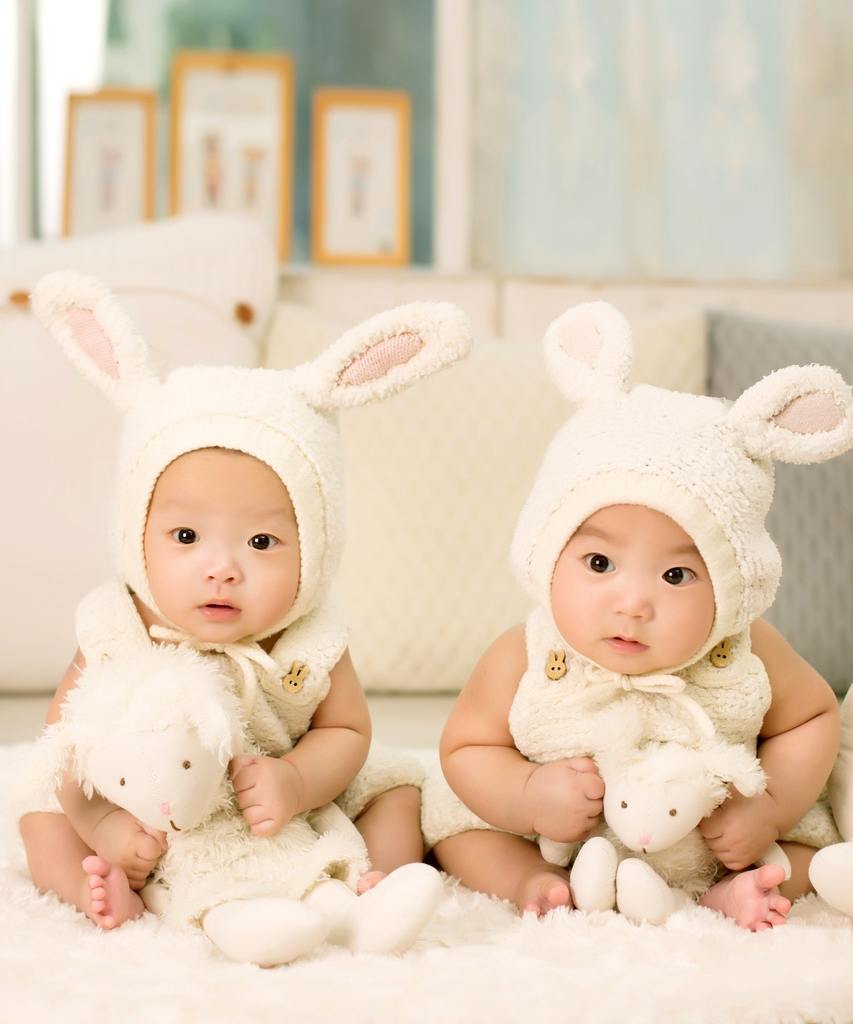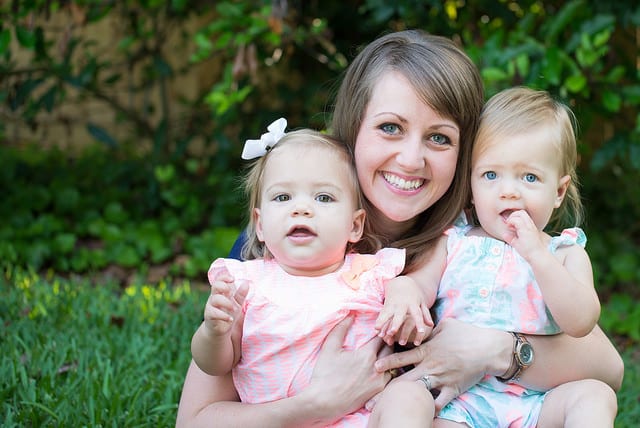Multiple births are becoming more and more common today due to assisted fertility treatments and other advanced reproductive techniques that women undergo to help them conceive.
Twins make up 90 percent of multiple births and triplets, quadruplets, and the occasional birth of more than 4 babies account for the remaining 10 percent.
There are two types of twins – identical twins, aka monozygotic twins, and fraternal twins, aka dizygotic twins.
Identical Twins Babies Definition
They are defined as a pair of twins that developed from a single fertilized egg and shares the same genetic information, same sex, same blood type, and almost similar physical characteristics.
Although that may be the case, these babies will still grow up as unique individuals.
How Are Identical Twins Formed?
- When a sperm travels through the fallopian tube, either from sexual intercourse or in-vitro fertilization, it should fertilize one egg or zygote.
- They are monozygotic, which means they are formed when one egg is fertilized by one sperm but splits into two.
- They then develop into two embryos with genetic codes that are nearly identical. This usually happens during the earliest stage of fetal development when the fertilized egg is merely a cluster of cells that float down into the uterus. Although the process can be explained, the reasons why it happens remain a mystery.
- The time the egg splits determines whether the twins will be sharing an amniotic sac or not. The earlier the split, the more independent an embryo will become by having its own amniotic sac, chorion – a membrane that surrounds the sac, and placenta.
Can Identical Twins be in Separate Sacs?
Yes, they can. Monochorionic-diamniotic kind of twins share one placenta but have two separate amniotic sacs. This usually occurs when a single fertilized egg splits after 4 to 8 days of fertilization. This accounts for 70 percent of all identical twin babies.
However, although each baby has their own amniotic sac within a shared chorion, they still share one placenta.
This puts them at risk for TTTS or Twin-to-Twin Transfusion Syndrome. This condition happens when the blood vessels are transfusing blood unequally between babies.
One might get excess blood flow and amniotic fluid that can result in heart strain. While the other baby’s blood flow is decreased, which can result in slower growth due to poor delivery of nourishment and oxygen, and less amniotic fluid. If monitored closely, this condition can be managed properly.
Monochorionic-Monoamniotic twins happen when a single fertilized egg split after 9 days of fertilization. The twins share one placenta and one amniotic sac. This poses a higher risk for both babies and must be monitored closely throughout the pregnancy.
Babies are at risk of complications such as cord entanglement and compression because they share one amniotic sac, which increases the odds of the cord getting damaged or intertwined.
Can They Have Different Placentas?
It depends. The placenta plays a very important role during pregnancy. It is the organ that develops in the uterine wall during the early stage of pregnancy and connects to the baby through the umbilical cord. Its major role is to provide nutrients, deliver oxygen, and removes all the waste products that may harm the baby.
The number of placentas in multiple pregnancies vary. As mentioned above, the earlier the split of the egg happened, the more independent the embryos will be. If the split of the fertilized egg is delayed for days, the embryos are highly likely to be genetically identical and will develop and share one placenta.
Do Identical Twins Share the Same DNA?
They share the same genetic makeup and therefore share the same DNA. A person’s DNA contains all the genetic information that makes up the person – from the color of the eyes, skin, and hair to personality traits and abilities.
Experts have conducted research and tests on the DNA of twins. The result is that identical twins have 99.99% similarities in their DNA while fraternal twins only have 50-70% DNA similarities.
These genetic similarities explain why they look alike, and why they usually have the same characteristics, abilities, and behaviors.
This makes it nearly impossible for people to tell which twin committed a crime even after genetic testing has been done. Experts are hoping that advancement in technology would make it possible to tell the epigenetic differences of twins someday.
However, in times like this, other factors can still be used to determine which twin committed a crime. One way is through fingerprints. Every individual has a unique set of fingerprints. Even twins who look alike and share the same DNA have unique fingerprints.
Fingerprint patterns are not part of genetics. The environment in the womb, the position of the baby, nourishment, and growth rate of each baby all affect the formation of the fingerprint patterns. For example, one baby might be touching something that puts pressure and produces details of the fingerprint pattern.
Identical Twins That Don’t Look Alike
Having the same DNA information, same sex, and the same physical characteristics does not mean that twins are going to look exactly alike. There may be small details in one of the baby’s physical characteristics that do not mirror the other. And although their parents dress their twins the same, other factors can influence appearance.
These include environmental and epigenetic factors that explain why and how they can be different in physical appearance, personality, and temperament.
In the Womb: Twin Pregnancy
Mothers will not immediately tell if they have conceived twins. Suspicions may arise because of the severity of pregnancy symptoms. An ultrasound can easily determine whether the expecting mom is having twins.
The Good
In multiple or twin pregnancies, babies are already starting to bond inside the womb. Starting at around 14 weeks, twins start to reach out to each other and bond.
They already learn how to share an amniotic sac, placenta, and nourishment from their mother. These factors contribute to their physical and emotional well-being when they are out of the womb.
The Bad
In terms of pregnancy symptoms, expectant mothers may experience more severe symptoms and the pregnancy will be considered as high-risk. Upon discovery of the multiple pregnancy, they will be closely monitored by their doctors because of the babies’ increased risk for complications and preterm labor.
The Worst Case Scenario
Multiple pregnancies do not only pose a risk to unborn babies, but to the mother as well. In worst cases, even if the pregnancy is closely monitored, complications still happen and cause the fetal death of one or both babies.
With proper monitoring, diet, and prenatal care, multiple pregnancies can be managed, and both twins and mother survive all associated problems and complications.
Chances of Identical Twins
Chances of conceiving twins have increased since assisted fertility treatments and drugs, as well as advanced reproductive techniques, have been introduced to women who are having infertility problems due to age and health conditions. Fertility treatments such as fertility drugs boost ovulation.
Here are other factors that may increase a woman’s chances of conceiving twins.
- Maternal Age
Women who get pregnant over the age of 30 are more likely to conceive twins due to a rise in the follicle stimulating hormone or FSH levels. The hormone responsible for egg development in the ovaries even before they are released.
- Heredity
If there is a history of having twins on both sides of the family, the odds of having twins is also significantly higher.
- Weight
Women who are obese usually find it hard to conceive due to other health reasons. Ironically, their odds of having twins is higher because of their higher levels of estrogen.
- Height
It is unclear why but women who are taller have higher odds of conceiving twins.
- Race
Records show that the African-American women have a higher rate of having twins.
- Diet
According to research, women who consume more dairy products have a higher chance of conceiving twins.
In general, they happen every 1 in 250 births. The odds of having identical twins is less common than having fraternal twins. It does not run in families and can happen randomly. Some families who have more than one set can chalk it up to luck and coincidence rather than genetics.
Non-identical are more common because it is influenced by genetics. If your family has a history of having multiple sets of twins, the chance of you having twins is high.
Although identical twins share the same genetic makeup, one womb, physical characteristics, and many more, they are not necessarily indistinguishable. They should be considered as unique individuals and given opportunities that are unique to each twin.
Each twin should be allowed to dress up according to their personalities and develop relationships outside the other twins’ circle.










 Store
Store